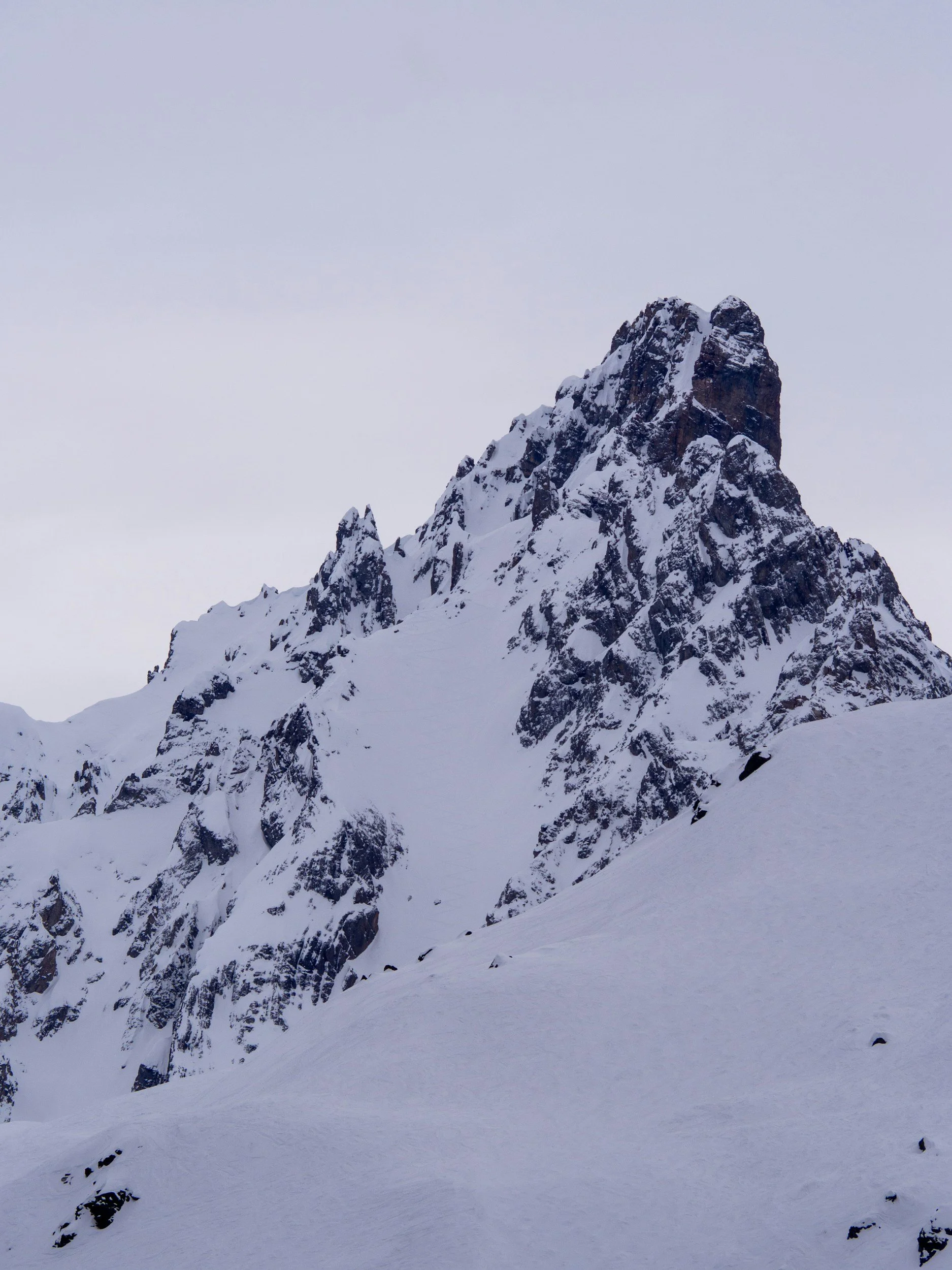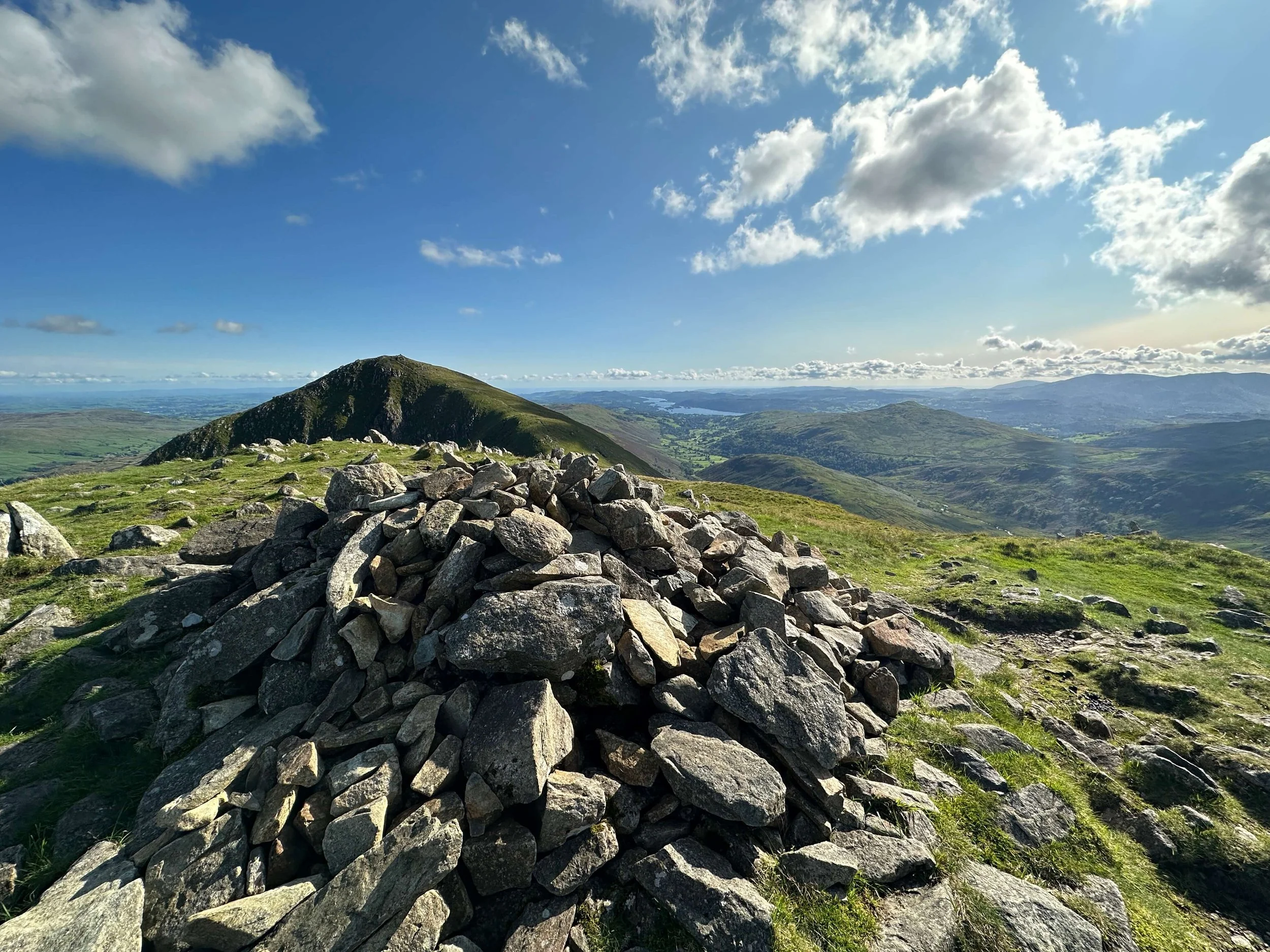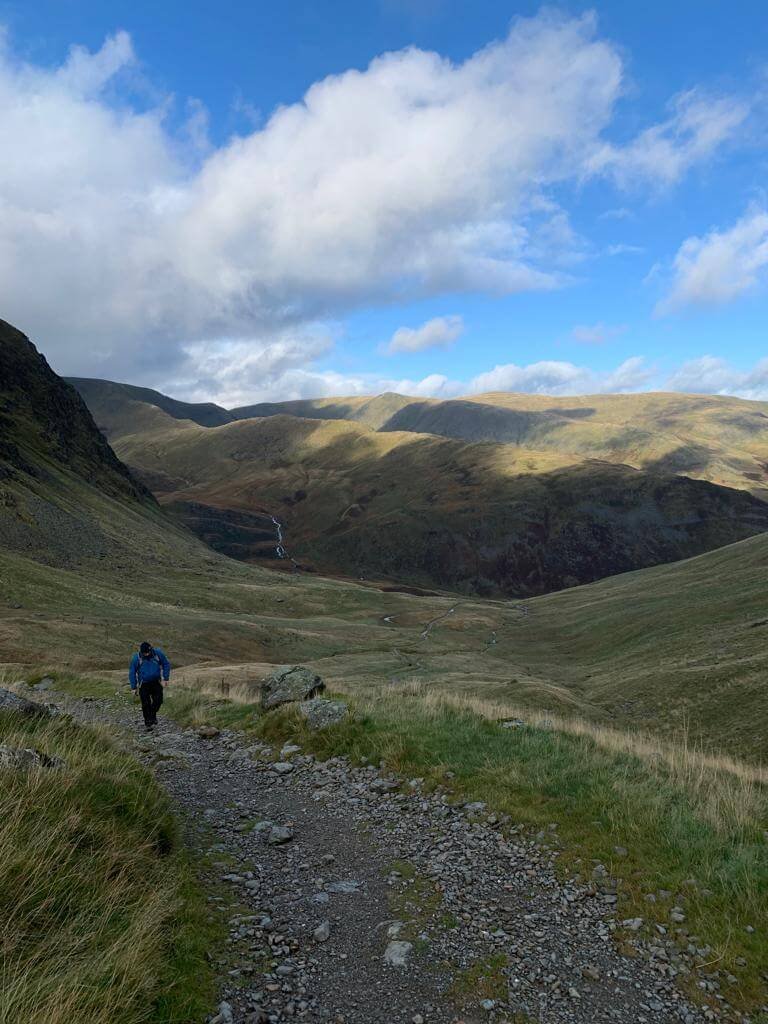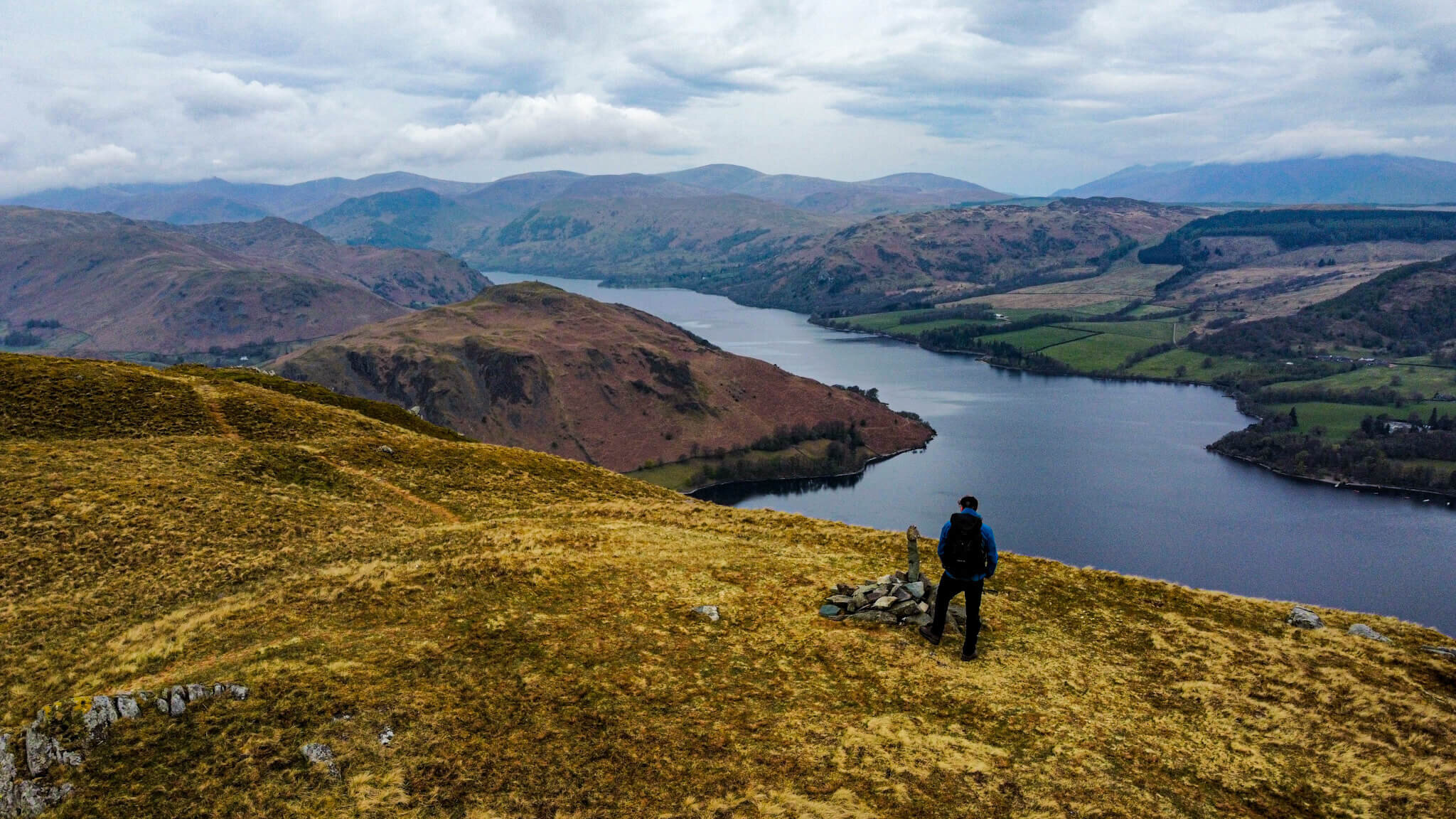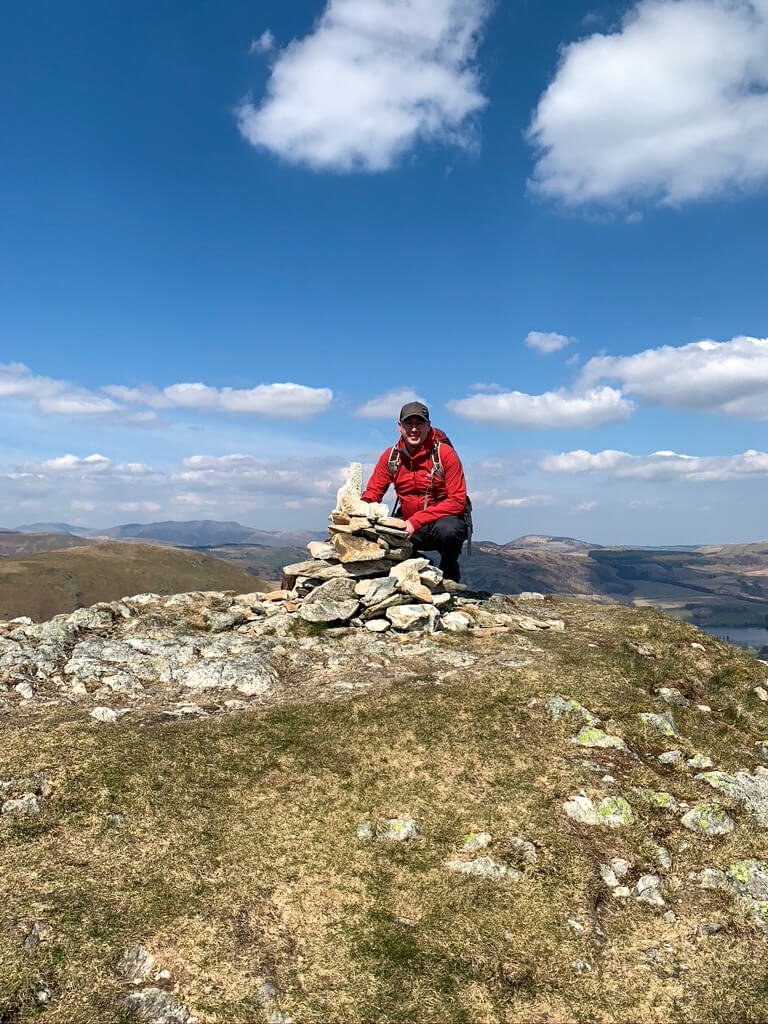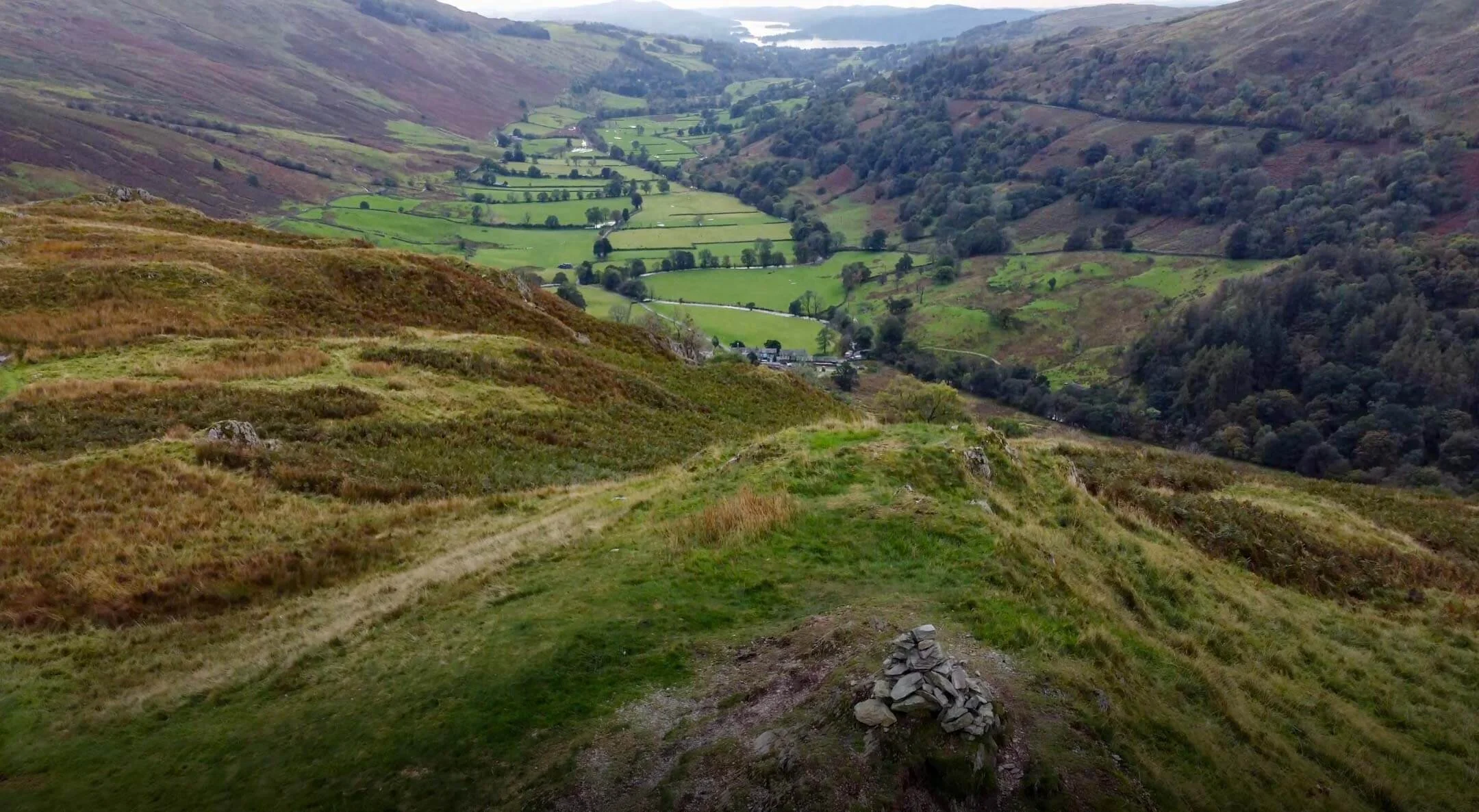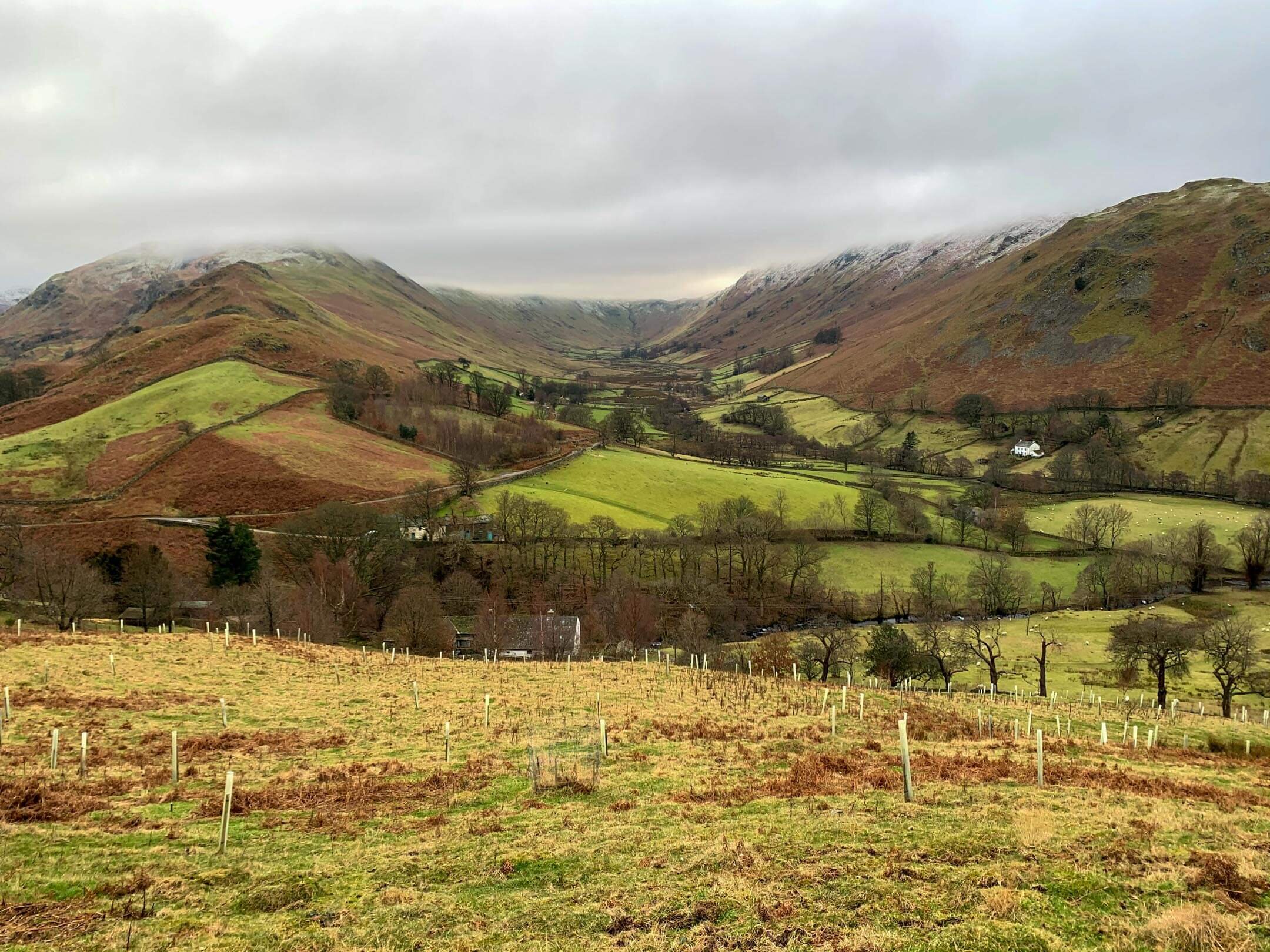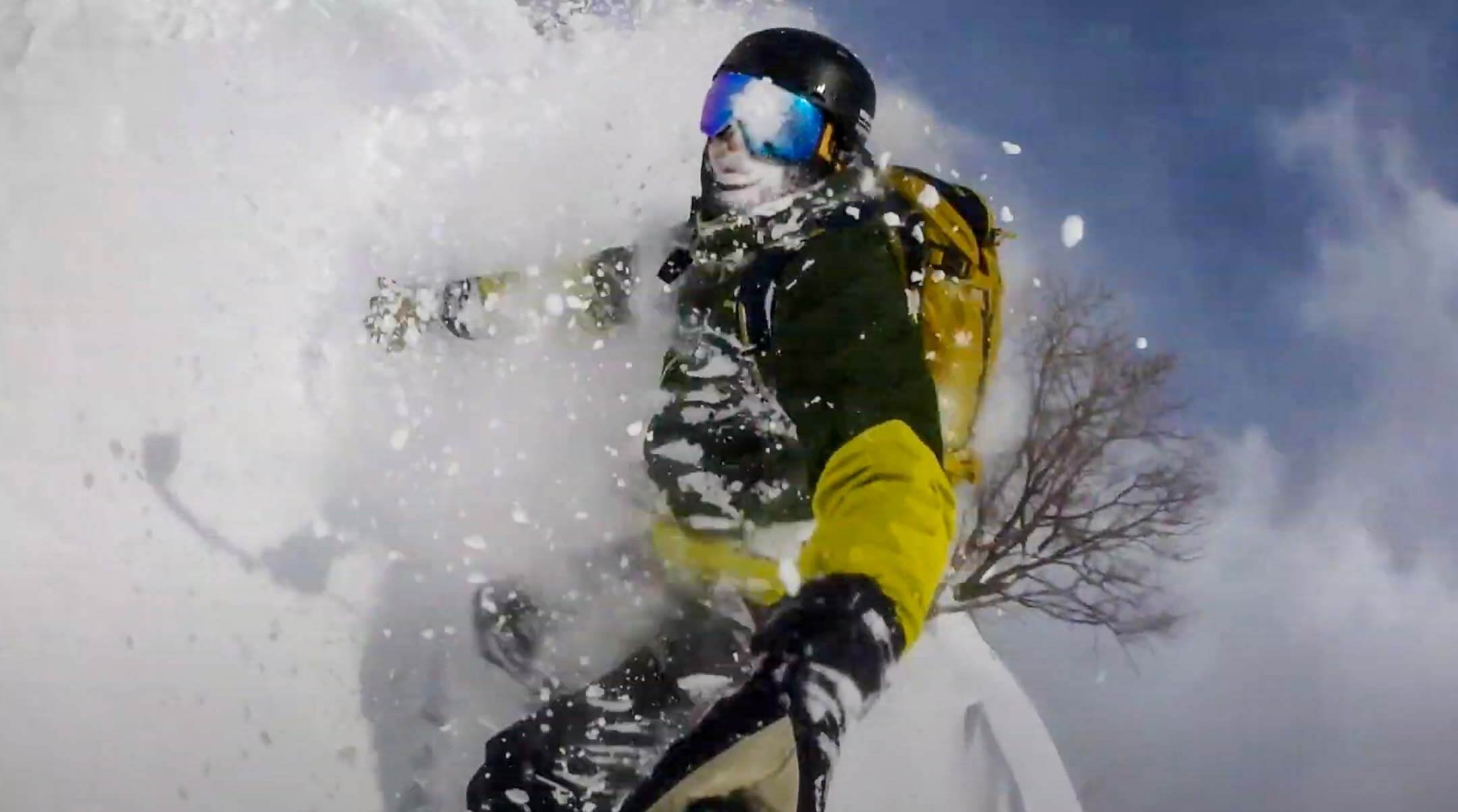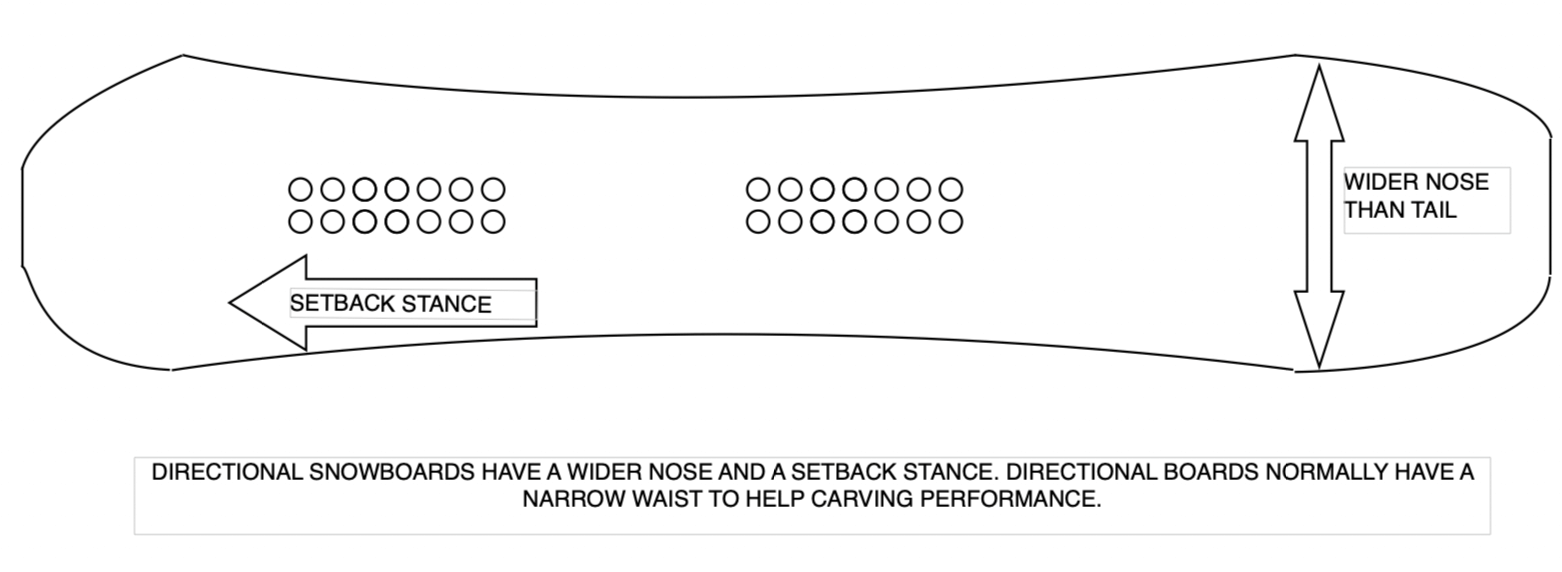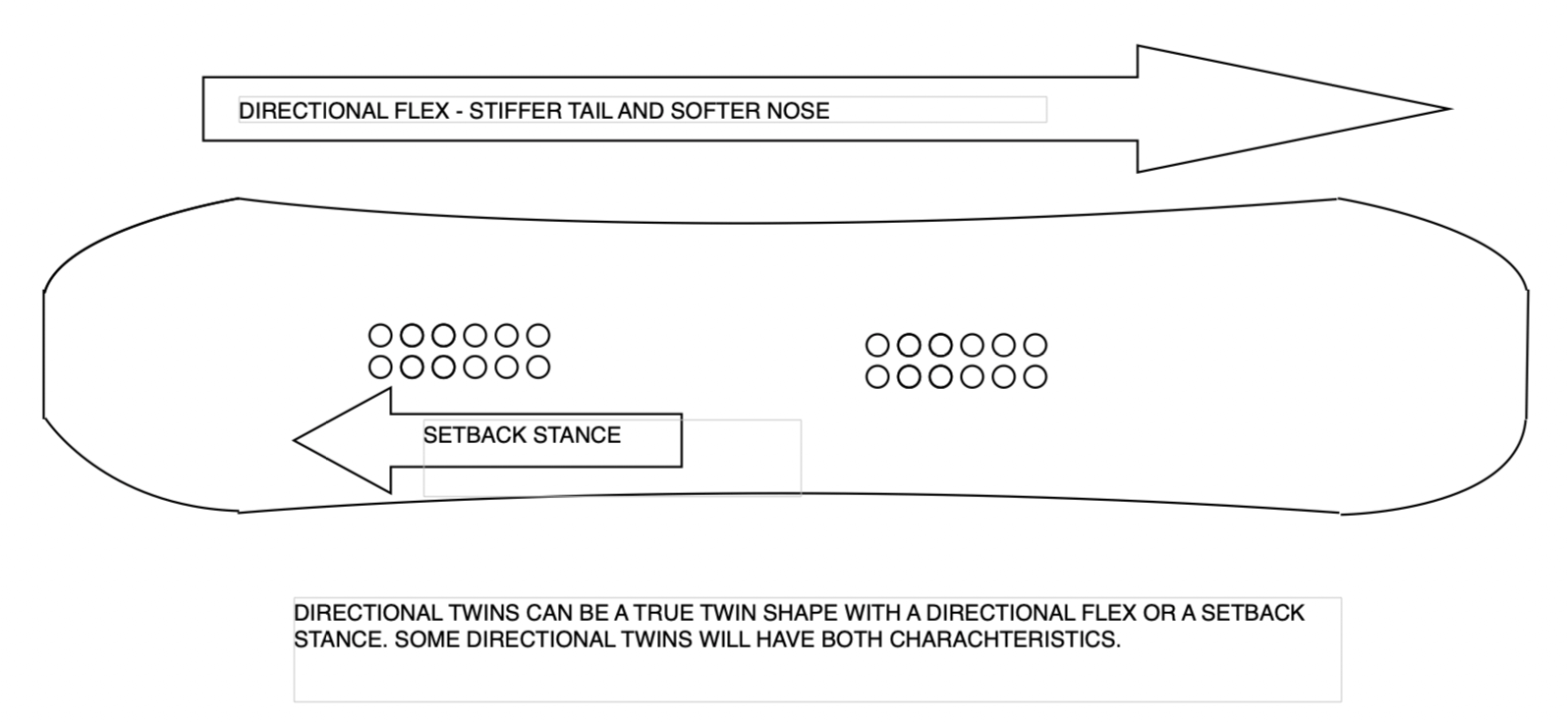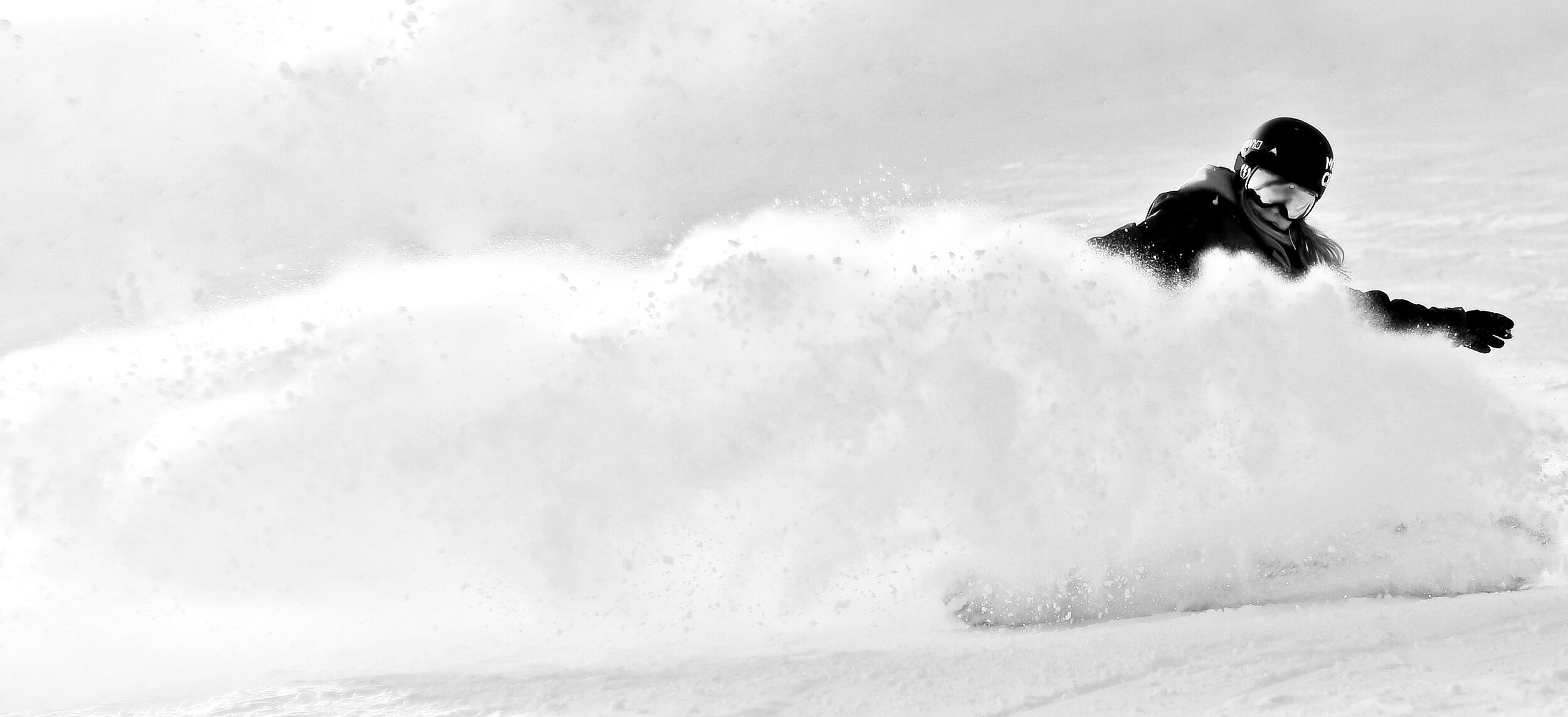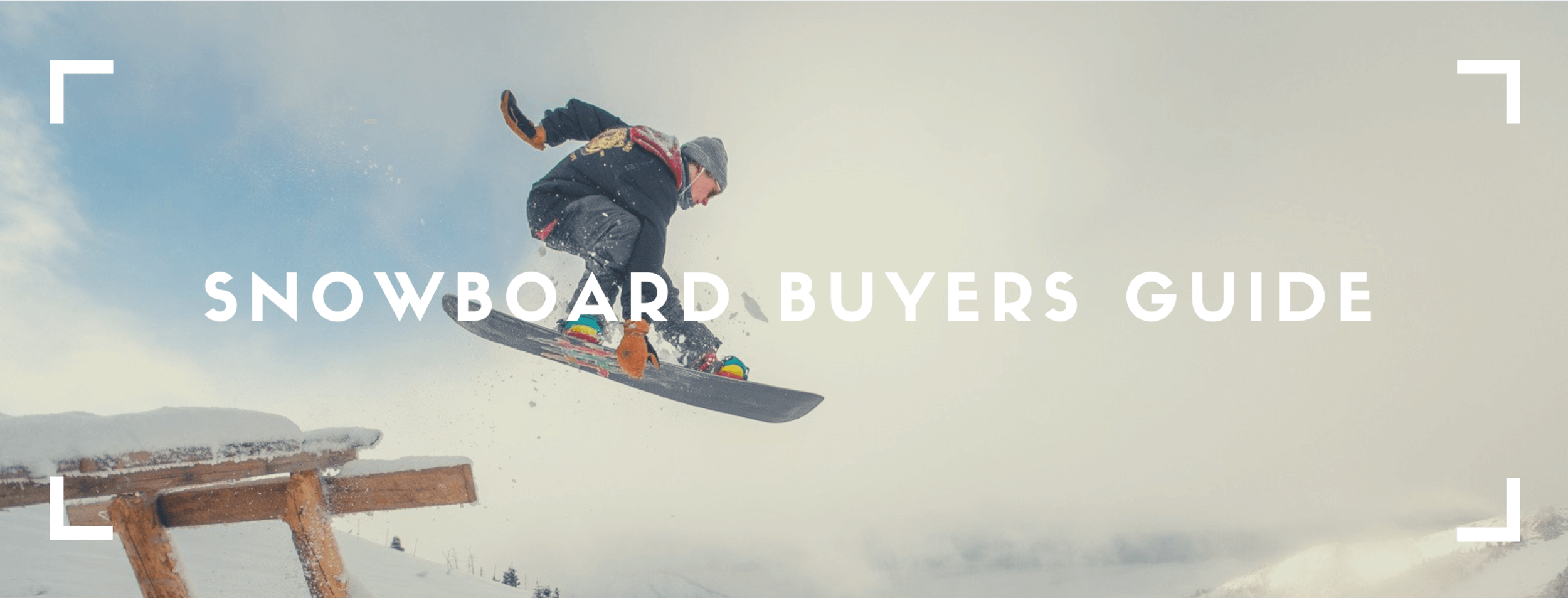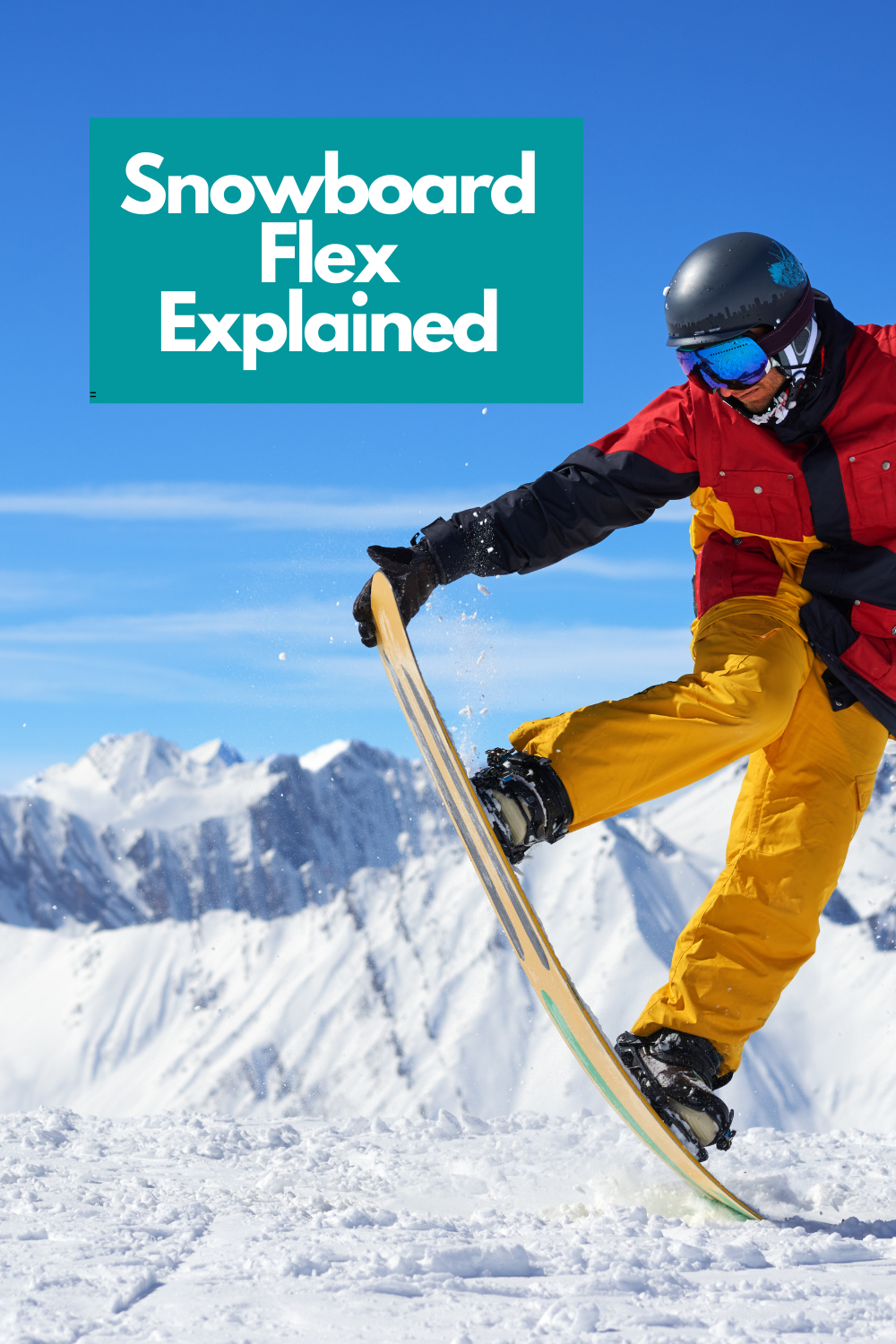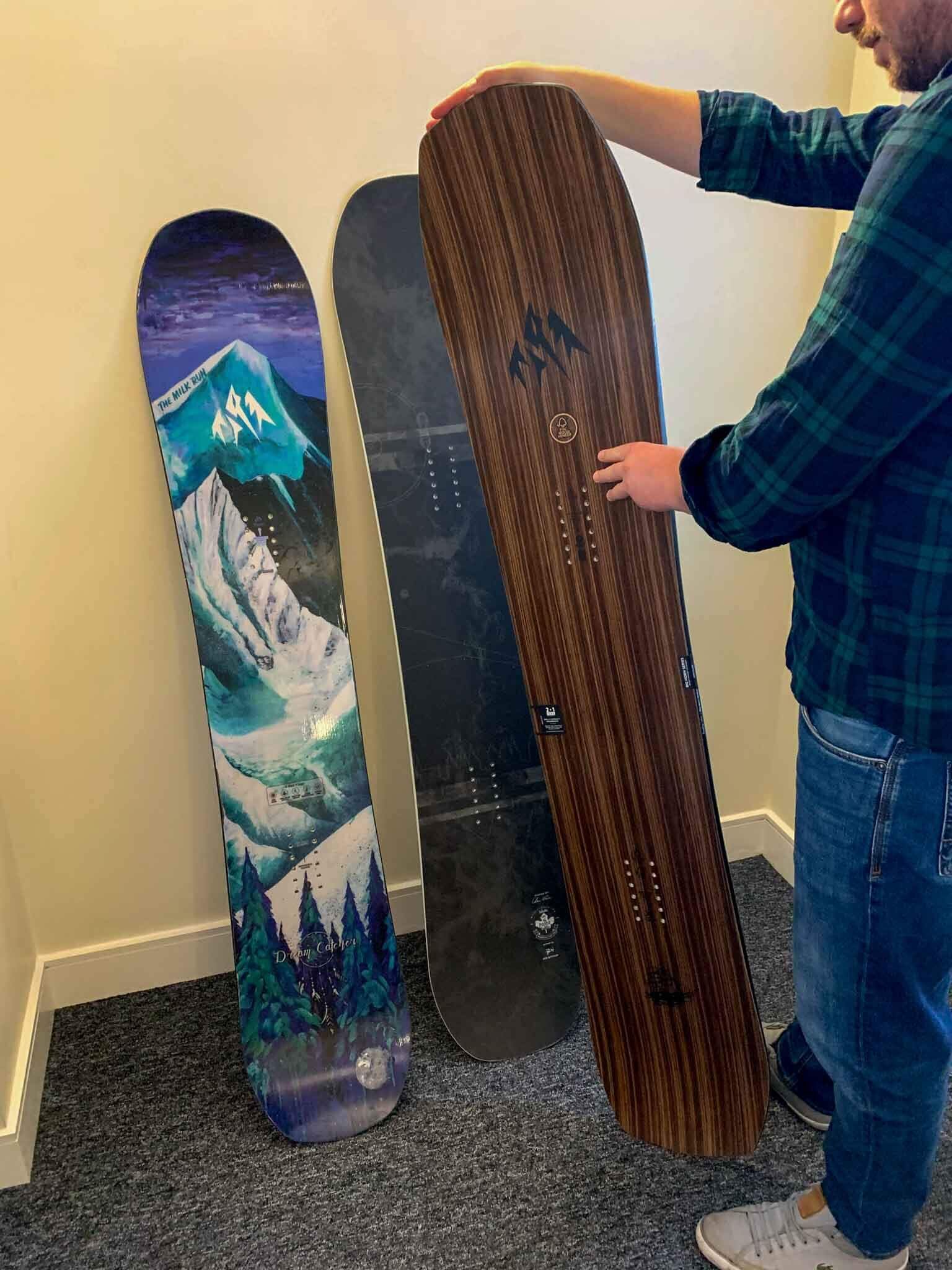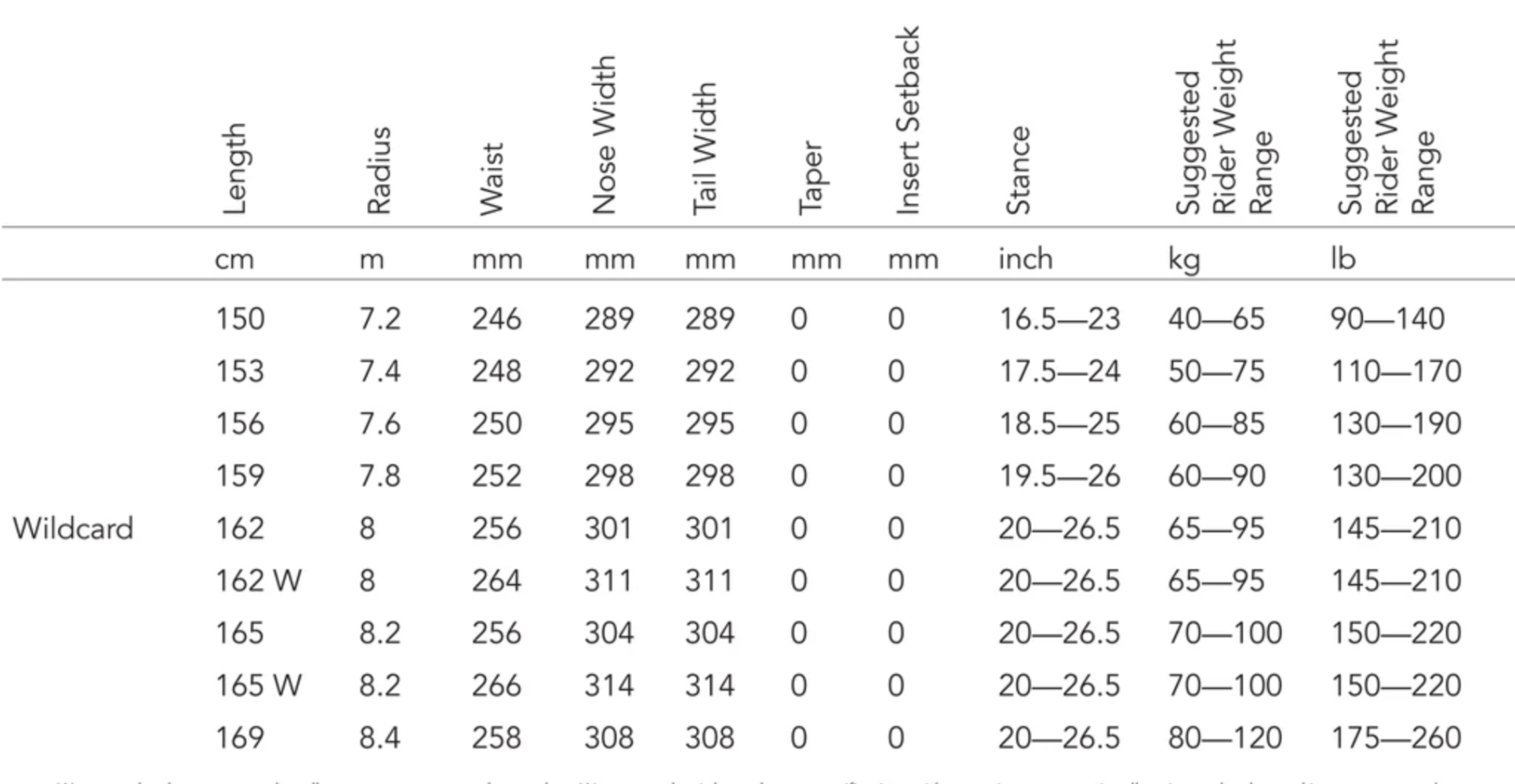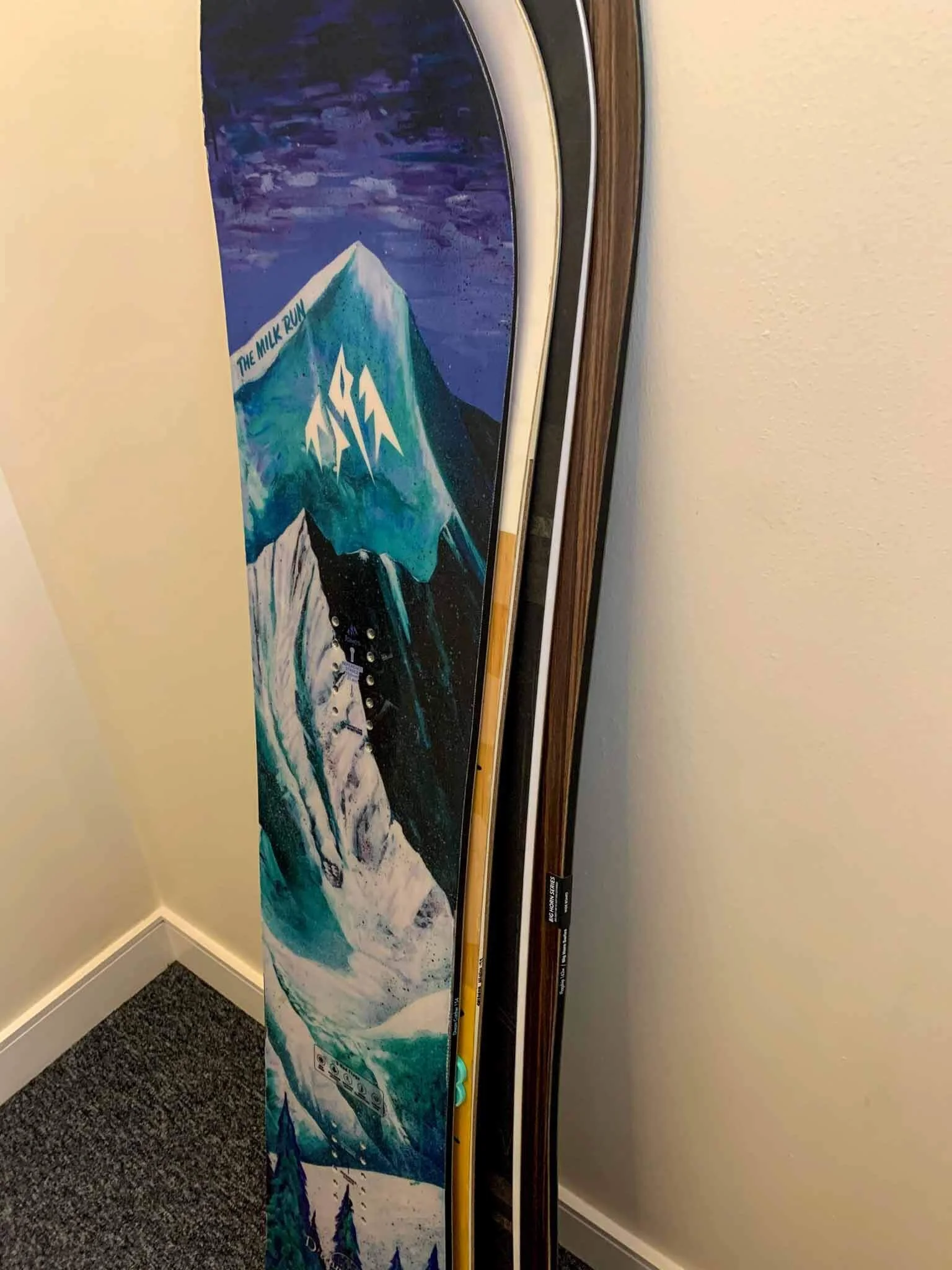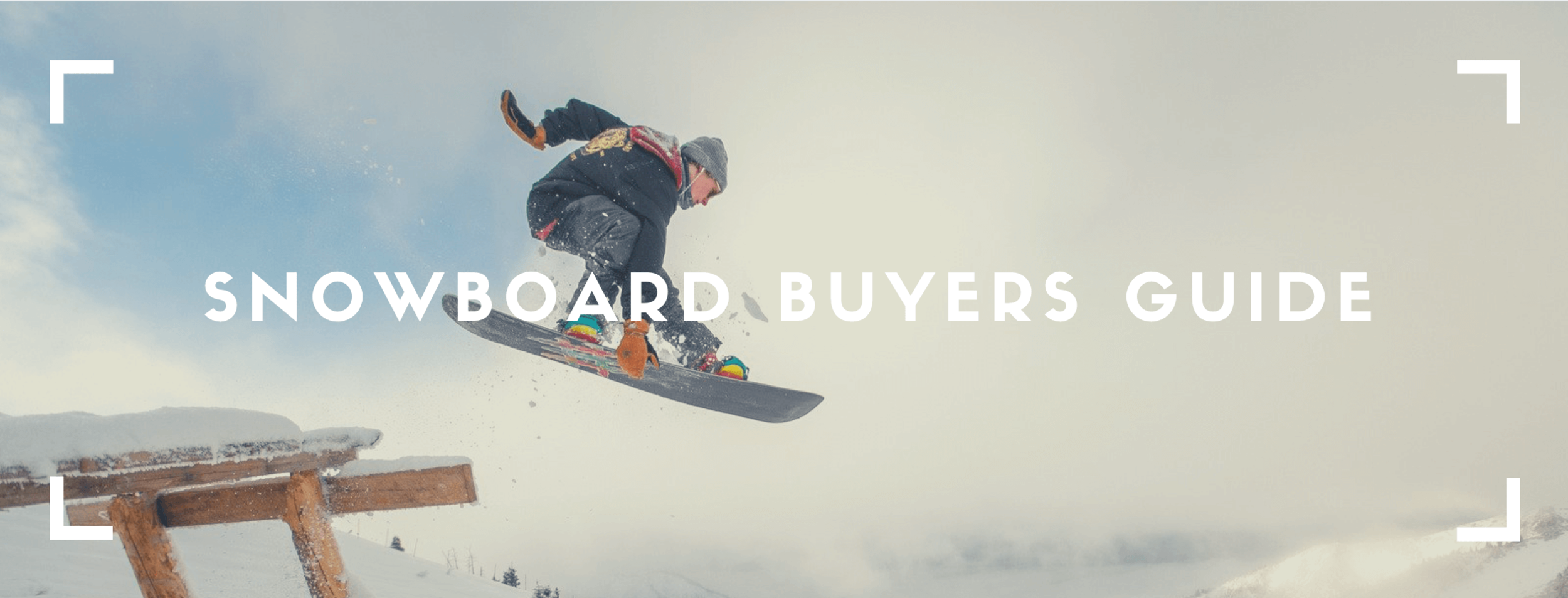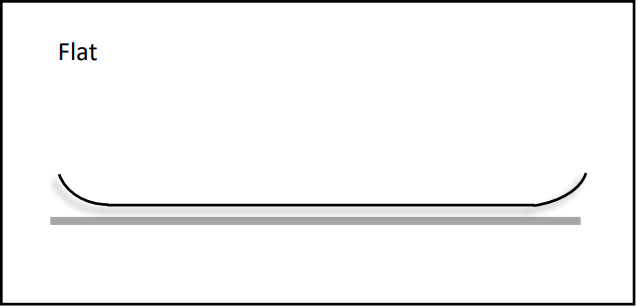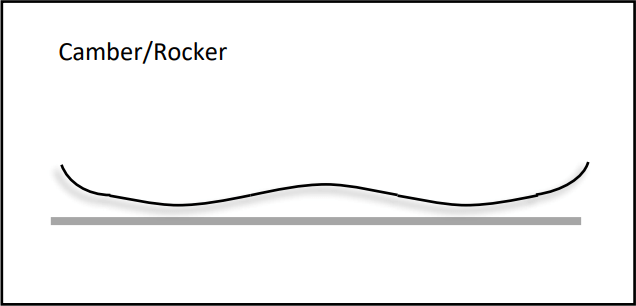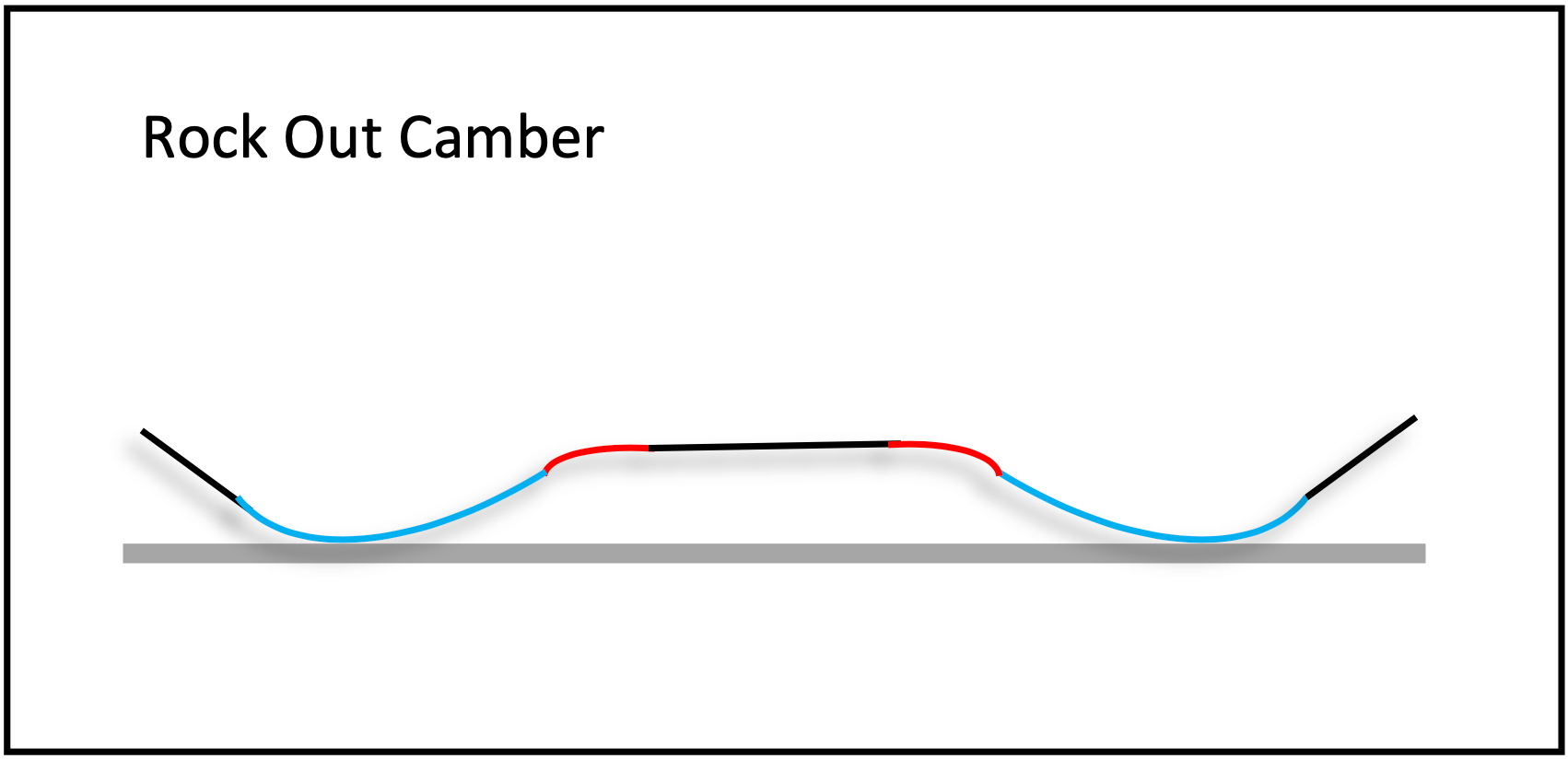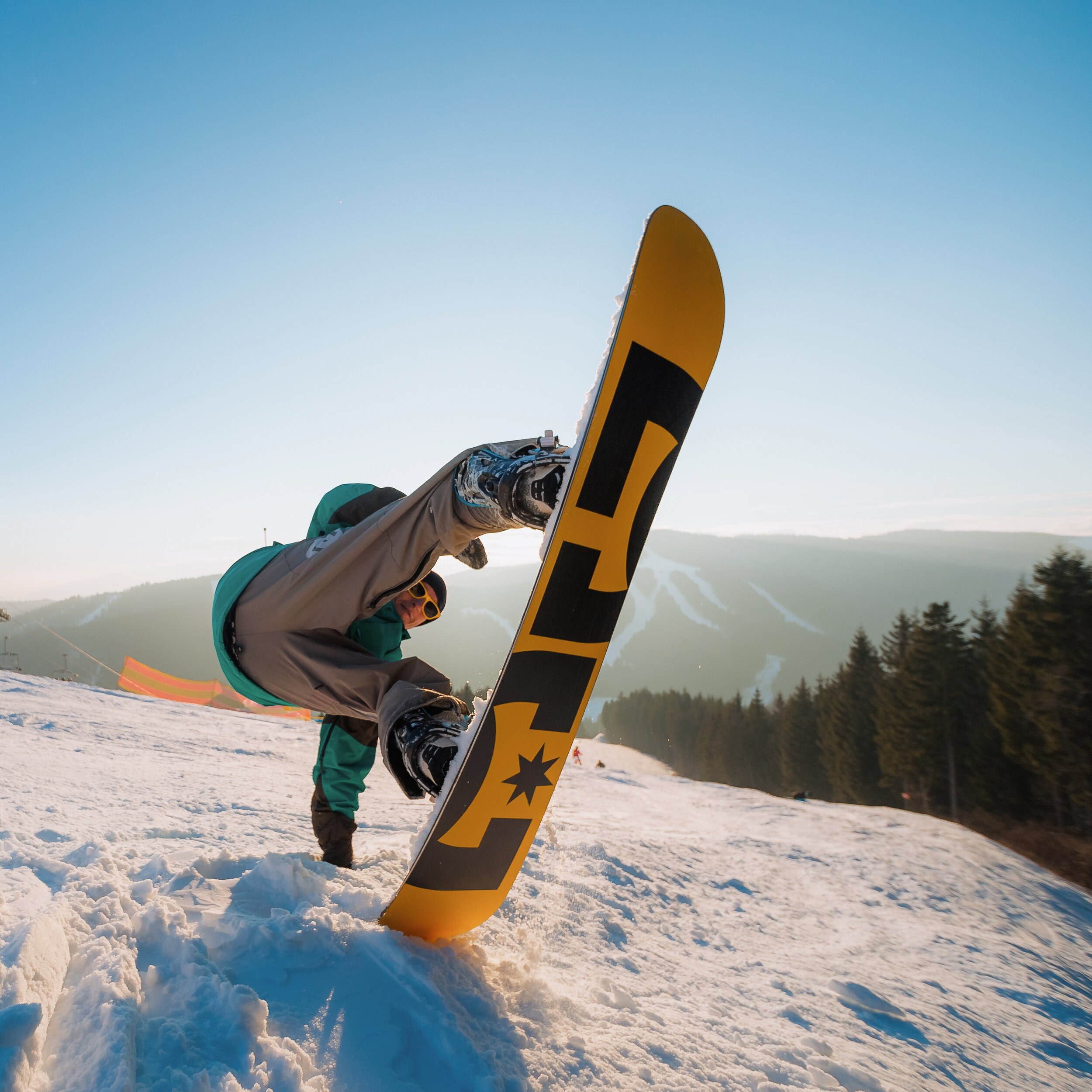Snowboard Shapes Explained
Walking into your local snowboard store and seeing a wall of boards all with different shapes can be quite overwhelming. In reality, understanding snowboard shapes is pretty simple and I hope that by the end of this post, you will be able to tell your twin boards from powder shapes. Choosing the right shape snowboard is important as it will affect how the snowboard rides across a variety of conditions and riding styles. Your personal ability will influence this decision along with the type of snowboarding you intend to do the most.
DIRECTIONAL SNOWBOARDS
Directional snowboards are intended to be ridden in one direction and are best for floating in powder and cutting through variable snow conditions. Directional snowboards are suited to freeriding and will normally be fast boards intended to carve and slash pow. There are a number of characteristics that are found within directional snowboards but the main one will be a longer nose than tail. By adding a longer nose to the board it will have better powder performance. Directional snowboards will normally also have a set-back stance where the binding inserts are shifted slightly towards the tail. This set back does two things, firstly it places the rider’s weight towards the tail of the board lifting the nose in deeper snow. Secondly, it allows the rider to apply energy and power through the back end of the turn to pop out of turns. Directional snowboards will sometimes have a different shape on the nose and tail with the tail normally being narrower than the nose of the board. Directional shape snowboards will normally have a camber profile that favours riding in one direction. For example, a directional camrock board may have a larger rocker on the nose as opposed to the tail.
BEST SUITED FOR
Directional snowboards are best suited to riders who are not interested in riding switch. It is not that you cant ride switch on a directional board, but depending on the severity of the directional bias it will be harder to master. Directional snowboards are great for freeriders who are looking to explore the whole mountain. Best for high-speed carves and riding in powder.
NOT SUITED TO
Due to the directional nature of these shapes riders who are more freestyle focussed might not appreciate them. Directional boards will make riding switch and landing jumps in either direction more difficult.
TWIN SNOWBOARDS
Twin snowboards are intended to be ridden both regular and switch and feel the same in both directions. A twin snowboard excels in freestyle terrain where taking off or landing a trick switch is required. A true twin snowboard is also great for all-mountain snowboarders who are equally happy riding in switch as they are with their front foot forward. Twin snowboards are symmetrical in every regard. This means that the board will ride and feel the same in both regular and switch. A true twin snowboard will have an identical nose and tail meaning they are the same in length and width. This equality between the nose and tail will help the snowboard feel familiar, independent of the direction it is being ridden. A true twin snowboard will have the binding inserts centred on the board so that each foot is an equal distance from the tip/tail respectively. This allows the rider to feel balanced in the centre of the board.
BEST SUITED FOR
True twin snowboard shapes are best suited to snowboarders who want a board that can be ridden in both directions. Perfect for the terrain park, true twins allow the rider to land or take off switch. Riding a twin snowboard will increase the options for spins and tricks that you can take to jumps, boxes, rails or side hits. A true twin board is also suited to beginners who are trying to figure out which foot they favour as their front foot.
NOT SUITED TO
A true twin can be ridden everywhere but will not be suited to riding powder as a directional snowboard. Because of its identical nose and tail characteristics and centred stance a twin board will be more effort to ride in deeper snow.
DIRECTIONAL TWIN
Directional twin snowboards are twin boards with some characteristics of a directional board. Directional twins are for the rider who wants a versatile snowboard that is comfortable riding switch but is looking for better carving and powder performance. Directional twins make great snowboards for all-mountain snowboarders who mostly enjoy exploring the mountain but will also spend some time in the park.
There are a few ways in which a twin shape can be made into a directional twin, the following will explain some of the most popular.
Binding Set Back: Placing the binding inserts slightly further towards the tail of the snowboard and creating a setback stance will increase control at the tail of the snowboard which is important for efficient turning.
Directional Flex: By creating a flex pattern that makes the board stiffer towards the tail and softer towards the nose a twin snowboard will perform better in powder as the softer nose will lift easier in deeper snow. This will also help with turn initiation.
Longer Nose: Increasing the length of the nose will not affect the performance of a twin board within the contact points, meaning you still get that manoeuvrability and control, but it will improve its performance in powder.
A twin can have one or more of the above adaptations to make it a directional twin.
BEST SUITED FOR
A directional twin snowboard is best suited for riders who want the ability to ride switch without it being their priority. Directional twin riders will prioritize all-mountain performance.
NOT SUITED TO
Riders who like to perform ground tricks and butters. It is not that you cant butter a directional twin it is just that the flex is likely to be stiffer than a jib board. Not impossible, but harder than it needs to be.
POWDER SHAPES
Powder shapes are a pandora’s box of possibilities. There is no hard and fast rule for powder shapes and you will find a variety of shapes that all excel in powder. The generally shared characteristic of a powder board is a wider than normal waist width. By increasing the waist width of the snowboard you therefore also increase the surface area in contact with the snow. This makes the snowboard harder to sink in deeper snow and keep you on top of the snow with ease. Another common characteristic is the use of rocker in the nose of the board. This rocker prevents the nose from diving under the snow and causing the rider to tomahawk! Rocker is unanimously accepted as key to a powder snowboard performance. It is very rare to find a twin powder board with the Bataleon Magic Carpet being the only one I can think of, most will retain a directional design.
Some of the following are common in designs to improve powder performance.
Swallow Tail: A swallowtail is taken from surfboard design and aims to drop the tail of the board into deeper snow, therefore lifting the nose. This makes riding pow effortless on your back leg. A swallowtail is a cut out of the tail of your board which essentially leaves two wings as your tail. There are many variations of swallow-tail with shorter stumpier designs like the Bataleon Camel Tow or longer tails like the Bateleon Surfer.
Tapered Design: A tapered powder board is a board that has a wide nose and gradually narrows throughout the board to the tail. This results in a narrow tail that sinks into deep snow, you guessed it preventing that back leg burn out. Tapered designs are found on many freeride boards and can also help your powder board feel great on the piste.
Setback Stance: Powder boards will often have a set back stance placing the rider’s weight towards the rear of the snowboard. As with all aspects of powder board design, this helps the rider to sink the back foot and lift the nose with less effort allowing them to blast through powder.
FINAL THOUGHTS
There is plenty of variety in snowboard shapes and you really should take some time to consider what shape best suits your riding style. As always thanks for reading and if you are still unsure feel free to get in touch via our socials or the comment section. Make sure to check out our Snowboard Buyers Guide where you will find all the information regarding how to buy a snowboard.
Snowboard Flex Ratings Explained | Snowboard Buying Advice
Snowboards come in all shapes and sizes, so it makes sense that their flex would also vary. Snowboard manufacturers rate the flex of each of their snowboards from 1 (soft) to 10 (high) which shows a large variation in flex scores. Snowboard flex is an important factor in how a snowboard performs different tasks and it is important to understand why specific snowboards retain certain characteristics and how it affects their performance.
SNOWBOARD FLEX RATING SYSTEM
Snowboard manufacturers rate the flex of their snowboards across a scale of 1 (soft) to 10 (stiff). Sadly there is not a defined standard across all manufacturers however the scale should help you in rating where a snowboards flex sits within that brands line up. It is rare to find snowboards that are rated at the extremities of the scale as a board that is rated as a 1 would not be very stable at speed and a 10 would be too stiff for most people to enjoy and press.
WHAT FLEX IS RIGHT FOR ME?
Depending on your style of riding and what you want to do you will need to look for a snowboard within a specific flex rating. Below are suggestions for beneficial flex patters of; Freestyle, Freeride or All-Mountain snowboarders
FREERIDE
If you like to go fast, ride steeps, and dig trenches with your carves then you will need a board that feels reassuring. By opting for a board with a stiffer flex you will benefit from greater stability and edge hold at higher speeds. A softer flexing board could be prone to ‘washing out’ through a more aggressive turn. True freeride snowboard will have flex ratings above 7 and will often use premium materials like carbon to ensure stiffness is maintained over time.
Due to the stiff flex of freeride boards, they are not recommended for beginner snowboarders.
FREESTYLE
Freestyle snowboards will come in a range of flexes depending specifically on the type of features you intend to hit. Mid flexing freestyle boards will offer a great compromise between being pressable and being able to support landings. A flex rating between 4-7 will be a good option for freestyle riders who want also want to make use of the whole mountain.
Freestyle snowboarders who want to make the most out of riding; boxes, rails, or street features will be better opting for a softer flexing board. But be wary the very soft boards will be great for butters but not a lot else. A Jib board rated between 3-5 should be very pressable but still have enough about it to leave the park and enjoy the rest of the mountains.
If you prefer jumps to jibs than moving towards the stiffer end of the board flex ratings may be beneficial. A stiffer board for hitting kickers will help you generate more speed by being stable on run in as well as more pop when you ollie. This will help you when hitting larger features where more speed is required. A stiffer board will also help you when landing too far back on your tail as it is less likely to wash out.
ALL-MOUNTAIN
If you are a snowboarder who likes to do a bit of everything then an all-mountain board may suit you better. Due to their versatility, most all-mountain snowboards will retain a medium flex pattern although could be medium soft or medium stiff.
MEDIUM
Medium all-mountain snowboards really will be the go-to boards for snowboarders who want to do everything. These boards will be stiff enough to hold an edge throughout a carve and hit kickers, whilst also retaining some of the playfulness of a more pressable board.
MEDIUM SOFT
Medium soft flexing snowboards will lend themselves more to jibs and rails but retain the stiffness to leave the park and explore the mountain. Medium soft boards are also great for beginners who will appreciate the non too aggressive nature helping them ease into turns.
MEDIUM STIFF
Medium stiff all-mountain boards will lose some of the playfulness of a medium soft flexing snowboard but gain further stability allowing the rider to charge harder and faster. Great for those who hit jumps but avoid rails a medium-stiff all-mountain snowboard is also well suited to the intermediate who is looking to progress their riding.
HOW DO SNOWBOARDS FLEX?
Snowboards flex in two main flex patterns; longitudinal and torsional, with both having an effect on how the board rides.
LONGITUDINAL FLEX
When we talk about longitudinal flex we refer to the flexibility of the snowboard from nose to tail. It is longitudinal flex that is referred to in manufacturer flex ratings which gives an indication of the overall flex of a snowboard. Longitudinal flex can run the full length of the board (continuous) or can be different throughout the board’s length (progressive).
These are some examples of snowboard flex variations.
TWIN PARK SNOWBOARDS
Some twin park boards will have a softer flex at the tip and tail whilst remaining stiffer under the feet and between the binding inserts. By having a softer nose and tail stiffness the board is more easily pressed into butters but still retains pop for ollies with the stiffer underfoot flex.
JIB SNOWBOARDS
Jib boards will have a soft continuous flex throughout the length of the board. This allows the tip and tail to be pressed whilst also allowing the centre of the board to flex ensuring a deeper press.
POWDER SNOWBOARDS
Powder boards tend to have a stiff flex from the tail through to the front binding inserts. Towards the nose the flex will soften allowing the nose of the snowboard to flex and raise above the snow. The stiffer flex towards the rear of the snowboard will help the board to be stable at faster speeds.
RACE SNOWBOARDS
Boarder X or Alpine race boards will have a consistent stiff flex running the length of the board. Speed is the aim of these boards so a stiffer flex will keep the snowboard stable at higher speeds whilst ensuring consistent edge hold.
TORSIONAL FLEX
Torsional flex refers to how a snowboard flexes from edge to edge. This is often seen when a snowboarder pedals their feet as they turn the snowboard. Torsional flex occurring across the width of the snowboard is important as it will affect how easily the snowboard turns. Although important, torsional flex is often ignored and is not rated on the manufacturer’s flex scale.
OTHER CONSIDERATIONS
ABILITY
Whether you are an experienced rider or this will be your first snowboard then ability should play a factor in your snowboard flex choice. Stiffer snowboards are harder to turn at slower speeds and this will make them a poor choice for beginner snowboarders. Beginners would benefit from a softer flexing board but if you think you will progress quickly then you could outgrow a softer board quite fast. A stiffer board is great for advanced riders but even experienced snowboarders don’t always like stiff snowboards. Ultimately the best way to find out if a stiff or soft board would suit your riding style is to get to a demo day and try them out.
ONE SNOWBOARD FOR LIFE
If you are a gear geek or like to refresh your quiver regularly then the next point may not apply to you, snowboards soften over time and with use. This means if you are going to be getting lots of use out of your snowboard you may want to consider choosing a board that is slightly stiffer than your preferred ride. This way when it softens up with regular use you will be left with a board that works well for you.
Worth Noting - Snowboards with premium materials like carbon stringers will soften less over time as these materials retain their original characteristics.
YOUR WEIGHT
Sorry I know nobody likes talking about their weight but when it comes to snowboard choices it is always an important consideration. So much so that snowboard manufacturers will add a recommended weight range for each size and model of the board they sell. In terms of flex, if you weigh more than the recommended weight range there is a danger that when flexing the board you may snap it. Alternatively, if you weigh much less than the recommended weight range you may struggle to flex the board to its potential making ground tricks harder to perform.
GET IN TOUCH
As always thanks for reading and if you are still unsure feel free to get in touch via the socials or the comment section. Make sure to check out our Snowboard Buyers Guide where you will find all the information regarding how to buy a snowboard.
PIN IT FOR LATER
CARE TO SHARE?
IF YOU FOUND THIS POST USEFUL AND YOU THINK IT MAY ALSO HELP OTHERS, PLEASE LIKE, SHARE AND COMMENT TO PROMOTE IT TO OTHERS
Snowboard Sidecut... What Is It? And How Does It Effect How The Snowboard Turns?
Probably one of the more confusing aspects when choosing a snowboard, sidecut will influence the shape and size of your turns. The sidecut is what you see when you look straight down the edge of your board. Essentially, your sidecut is a small cut out of a larger circle influencing the shape of your turn. A smaller sidecut will give you a tighter turn whereas a longer sidecut will offer long drawn-out carves.
WHAT IS A SNOWBOARD SIDECUT
The term sidecut refers to the shape of the edge of the snowboard, in other words, it’s the curvy bit on the side. The arc of the sidecut will vary between boards and will depend on the intended use. You will hear the terms sidecut and sidecut-radius used to describe the snowboard’s turn shape.
In straightforward terms the deeper or more obvious the sidecut the shorter the turn and the smaller the sidecut-radius. This means if you are looking for a snowboard that will turn quickly you should look for a board with a deeper sidecut, this would be useful in the terrain park as you initiate a spin of a kicker. Alternatively, if you are looking to perform longer arcing turns then a board with a more shallow sidecut would be better.
TYPES OF SNOWBOARD SIDECUT
To suit the variety of terrain that snowboarding has to offer there are also a number of sidecuts that will be suited for the purpose. Below is a generalized outline of the types of sidecut and their suited uses.
Radial Sidecut
Radial sidecut refers to boards that have a deeper sidecut for quicker and smaller turns. A radial sidecut will be very narrow at the waist of the snowboard ensuring a shorter turn radius. Radial sidecuts are often found on freeride boards that are designed for carving.
Progressive Sidecut
Progressive sidecuts use varying sidecuts along the length of the same board. The tip and tail may have a different sidecut to the middle of the board meaning that the board will act differently through the turn. This sort of sidecut can be used to help beginner riders when initiating a turn but ensuring the middle of the turn is longer.
Asymmetrical Snowboard Explained
Asymmetrical snowboards have a deeper heel sidecut than on the toeside. Heel turns are harder due to our bodies anatomy so an asymmetrical sidecut helps to even out this imbalance. Asymm boards allow for shorter heelside turns with minimal effort. Asymm sidecuts are found on a number of boards with all-mountain boards finding this sidecut increasingly popular.
Magna-Traction / UnderBite / Traction Tech
Brands use different terminology to explain this type of sidecut but essentially it is the same thing. A serrated edge that gives you more contact points on the snow. By introducing more contact points throughout the sidecut your board will have a better grip in icy snow conditions. Think of this sidecut as a bread knife with more contact points allowing you to slice through the snow more efficiently.
HOW DOES SIDECUT AFFECT YOUR RIDING STYLE?
Freestyle
Freestyle snowboards tend to have a shorter sidecut radius allowing the boards to turn quickly at slower speeds. Having a shorter sidecut on a freestyle snowboard will help initiate spins and allow quick changes of direction with greater manoeuvrability.
All Mountain
If you are looking for a snowboard that feels comfortable everywhere then consider a snowboard with a medium sidecut radius. A medium sidecut will be a middle ground between short sharp turns and long drawn out carves.
Freeride
Now, this is actually a tough one as it will depend on what type of freeride you like to do. If your only goal is carving on groomers than getting a snowboard with a sidecut of 8m + will suit you well. This larger sidecut radius will allow for mellow carves with a longer turning radius. That’s all well and good for a nice wide piste but if you want to have fun in some tight trees then you may want to size down that sidecut radius.
FINAL THOUGHTS ON SNOWBOARD SIDECUTS
Essentially, although sidecut might not be the first thing you look at whilst choosing your snowboard it will have a large impact on how your snowboard rides, specifically in carving and your ability to quickly go edge to edge. Choosing the right snowboard sidecut for you will ensure you have the best day on the mountain. Hopefully, that is the snowboard sidecut radius explained, however, if you have any questions make sure to drop them in the comments below. Make sure to check out the Snowboard Buyers Guide where you will find all the information regarding how to buy a snowboard.
How To Choose The Correct Snowboard Length
Traditionally people would choose their snowboard length based on their height but ultimately that doesn’t really make sense. Imagine two people of equal heights, however one weighs 70kg, and the other weighs 90+ kg. Due to the difference in weight, it would make riding the same snowboard feel much different. Then throw into the mix the riders terrain preferences… if one wanted to ride park whilst the other wanted to ride powder then riding the same length of snowboard would not work. Below I break down the things that really matter when choosing the correct size of snowboard to ride.
WEIGHT
The most important aspect to consider when choosing snowboard length is the weight of the rider. This is so important that snowboard manufacturers put a handy weight range on the back of every board. Below is the information for my snowboard from Prior Snowboards. Each brand will produce a snowboard size chart or snowboard size calculator for the boards in their range.
Looking at the snowboard sizing guide above you can see that each size has a recommended weight range. Taking weight into consideration we can work out how to choose the correct size snowboard. The reason we rely on weight and not height is that each snowboard has a set flex pattern (Learn More - Snowboard Flex).
If you are below or towards the bottom of the weight range you will find the snowboard harder to press and manoeuvre. Being too light for the board will prevent you from using your body weight to apply the correct pressure to the board. This will make learning ground tricks and butters quite difficult. On the other hand, if you are above or towards the top end of the weight range you could put too much pressure on the board whilst flexing. This could result in the snowboard snapping or breaking if landing backseat of a jump. Being over the recommended weight range for the board will cause the board to flex more and make it less stable at higher speeds.
In an ideal scenario, you want to be in the middle of the recommended weight range for the snowboard. This will give you the best on-snow experience and you will feel the board ride as it was intended to be ridden.
The recommended weight ranges on the snowboard sizing charts are not a definitive answer to the question. Here are some reasons you may wish to size up or down your snowboard.
TYPE OF SNOWBOARDER AND SNOWBOARD LENGTH
The type of snowboarding you do will influence the size of snowboard you should ride. This is why people who snowboard frequently often have a quiver of boards in different lengths or sizes so they can ride a board well-suited to the conditions or type of snowboarding they are doing that day.
FREESTYLE
Freestyle snowboarders may choose to ride a shorter snowboard. A shorter snowboard will be easier to spin and press, whilst it will also feel easier to initiate turns and sharp movements. By opting for a snowboard that is a few centimetres shorter you will find your park riding will be easier to progress. Be wary of going to short, as if you are well above the weight range you may snap your snowboard.
FREERIDE
The opposite applies to freeride snowboarders who will value stability and float over manoeuvrability. By opting for a snowboard that is a few centimetres longer a freeride board will feel fast and stable allowing you to rip around the mountain. A longer board will have a longer edge meaning that you will have more edge in contact with the snow helping you maintain grip. Do not go for a board that is far too long for you as you may find this difficult to initiate turns on.
ALL-MOUNTAIN
All-mountain snowboarders should aim to stick to the recommended weight ranges as these will allow the most versatility. If you are an all-mountain freestyle then opt 1-2cm shorter but no more. If you prefer freeride than 1-2cm longer.
HOW ABILITY INFLUENCES SNOWBOARD LENGTH
Ability can be a key factor in snowboard length choice and it can have a big impact on your enjoyment. When I first learnt I was given a 162cm snowboard which was far too long. I found for learning that it was better to use a shorter board as they were easier to turn. Building confidence is important in the initial stages of snowboarding and riding a board that is too long for you can really put a dampener on the enjoyment factor. It is ok for a beginner to ride a snowboard where they are slightly above the weight category as they are unlikely to be doing anything extreme to snap or break the board.
After the beginner stage, there is little reason to consider snowboard length dependent on ability as the other factors such as weight and riding style take priority.
HEIGHT AND SNOWBOARD LENGTH
As mentioned in the intro to this post height is traditionally the method used to determine snowboard length, however, it is outdated and shouldn’t be used as the determining factor. Height if anything should be used as a starting point and should then be refined using the rider’s weight and riding style.
Particularly short or tall people should pay attention to the length of their snowboard as they want to ensure they can fully adjust their stance into a comfortable position. A tall snowboarder on a shorter board may end up with too narrow a stance whereas the opposite may apply to a short rider on a longer board.
IS IT BETTER TO GET A LONGER OR A SHORTER SNOWBOARD?
Ultimately the answer to this question really depends on the type of snowboarding you want to do and your ability. Short snowboards will be easier to turn, making them great for beginners. A longer board will be more stable and have more contact with the snow ensuring they are perfect for carving. Advanced snowboarders who favour park may choose to downsize their board by around 2-4cms. Similarly, snowboarders only interested in freeride may opt for a board that is longers by 2-4cm.
STILL UNSURE?
As always thanks for reading and if you are still unsure feel free to get in touch via the socials or the comment section. Make sure to check out our Snowboard Buyers Guide where you will find all the information regarding how to buy a snowboard.
Care to share?
If you found this post useful and you think it may also help others, please like, share and comment to promote it to others.
Snowboard Width Explained
Snowboard width is a measurement that is often overlooked as riders tend to focus more on the length of their snowboard. Get the width wrong though and you will have all kinds of trouble, and you may not be able to perform certain techniques, such as carving accurately. The width of your snowboard may vary depending on the type of riding you do and the conditions you are riding in, but the biggest indicator is your foot size.
HOW TO JUDGE SNOWBOARD WIDTH
The width of your snowboard should allow your toes and heels to overhang the edge of your board by around 1/2 an inch. By having this slight overhang, your toes and heels will be directly placed above the edges of your snowboard. This foot placement will allow you to quickly transfer the power from your movements to your edges to turn your board.
When in the store finding your next snowboard, ask the salesperson to let you place the snowboard on the floor. This is common practice in snowboard stores so should not be an issue. When on the floor you can stand on the board in your stance, without shoes, to see where your feet lay in relation to the edges. Remember that snowboard boots will add a few CMs to your feet so if you are already over the edge it is likely the board you are standing on will have too narrow a waist.
Even better if you bring your actual boots and bindings to the store with you. Most stores will allow you to attach your bindings to their demo board so you can see what the width is like when using your gear. This will give you the best idea of whether the board is the right width for you.
Really important to stand on the board using your riding angles! This will give you the most accurate results.
IS SNOWBOARD WIDTH REALLY IMPORTANT?
If your toes/heels overhang the board by over 1/2 an inch it is likely that you will experience some kind of toe or heel drag in the snow when turning. Toe or heel drag indicates that your snowboard width is too narrow and will result in reduced snowboard performance. The drag can cause your board to slip out during turns and you could end up falling regularly. This will be a particular problem during carving.
Having a board that is too narrow will negatively affect your snowboarding however some people choose to ride with a wider snowboard. Wide snowboards are designed for those with bigger feet, ergo bigger boots, and should help prevent toe/heel drag in the snow. The same 1/2 inch rule should apply to big booted riders only that they will achieve this by riding a wider board.
CAN I RIDE A WIDE IF I DONT NEED TO?
In short, the answer is yes… here are some of the reasons why you may or may not want to do that.
One guy who absolutely swears by riding a wider board is Ryan Knapton. Ryan is probably one of the best carvers you will ever see and he rides an extra wide board to allow him to fully lay trenches. By having a wider board Ryan demonstrates that you can lean further into your turns without getting any drag. If you have not heard of Ryan Knapton make sure to check out his Youtube here where this point will be fully demonstrated. Or watch the below video.
Riding a wider board will add stability and increase your float in pow, so for freeriders going wider could be a better idea.
Why may you not want to ride a wider snowboard than you need to… well due to the extra width a wider board can take longer to go from edge to edge. This can influence your turn size and shape. By watching the video above I hope it proves that going wider doesn’t stop you from being able to snowboard well… but you will need experience to handle that width on your snowboard.
POWDER BOARDS
Powder boards may be the exception to every rule where you will want to look for a wider board. In recent years, powder shapes are getting wider as this adds surface area and will increase float in the deep stuff. On a powder board, don’t worry if your feet are a little narrower than the board’s width. If your intention is to only use this board when its dumped you will thank yourself for getting the extra width.
FREESTYLE BOARDS
Pay extra attention to waist width when choosing a freestyle snowboard. Generally speaking, freestyle boards are designed to improve manoeuvrability and as such will have narrower waists. The narrower waist will help reduce swing weight and allow the rider to turn on a dime but if your feet are overhanging then this could cause you issues.
ARE SIZING CHARTS RELIABLE?
Snowboard width sizing charts do exist but honestly, in our opinion, the best thing to do is to get into the store and stand on the board. Even better if you can bring your boots and bindings to the store to get a proper feel. Most shops now have a demo fleet and I would recommend a demo day if you are still unsure of width.
WHAT TO DO IF YOUR SNOWBOARD IS TOO NARROW
Assuming that it is too late to return the snowboard and that nobody wants to buy it off you for a reasonable price…. all is not lost. If your snowboard is too narrow you can add risers to your bindings. Risers will lift your bindings higher off the board allowing you to lean but reducing toe/heel drag in the process. Yes, you would have to buy them but its a damn lot cheaper than a new board!
Another purchase you could make is a new pair of snowboard boots. You will find that different brands or models of boots can be longer or shorter even if they are the same shoe size. Ask your local snowboard store about low profile boots that may reduce your foot length on the snowboard. By reducing the space your boots take on the board you may even be able to fit into a smaller pair of bindings.
ABILITY AND SNOWBOARD WIDTH
For beginners, it is unlikely that snowboard width will affect your ability to learn. In the formative stages of snowboarding, you are not going to be doing any extreme inclination or angulation with your board. This means if you are given a rental board and your boots overhang it should not pose a massive issue. If however, you are buying your own board to learn, make the effort to find the correct width snowboard as if it is too narrow this could hold you back later on.
Advanced snowboarders who like to spend their time carving aggressively should ensure they get the width right. Having a board that is too narrow will prohibit your ability to get further up onto your edges. You should aim to get a lower profile boot to accompany your snowboard to make the perfect combination for carving. If carving is your main riding style then going wider will help ensure there is less drag through your turns.
FINAL THOUGHTS
Getting the width of your snowboard right is important and shouldn’t be a rushed decision. Make sure to go to your local snowboard store and try out a number of boards. By standing on the boards you will have a better idea of whether you will need a wider board in that model.
STILL UNSURE?
As always thanks for reading and if you are still unsure feel free to get in touch via the socials or the comment section. Make sure to check out the Snowboard Buyers Guide where you will find all the information regarding how to buy a snowboard.
The Difference Between Sintered And Extruded Snowboard Bases?
When choosing a snowboard the base should be one of your considerations. The base will determine how fast you can go and how often you need to wax your board. Choosing whether to opt for a sintered or extruded base can come down to cost or the type of riding you like to do. The aim of this post is to provide you with the information needed to make the right decision on the base of your snowboard.
Ultimately there is no right or wrong answer to the question, ‘Which snowboard base is right for you?’ as it depends on your circumstances. You will want to consider the following; your budget, how often you snowboard, your ability, and where you spend the most time riding.
EXTRUDED VS SINTERED SNOWBOARD BASES
Let’s do a direct comparison between Extruded and Sintered snowboard bases.
PRICE
Extruded bases will always be cheaper than sintered bases. The manufacturing process is cheaper therefore the board overall is cheaper when using an extruded base. If budget is your main concern then definitely consider going for an extruded base. An extruded base is one of the reasons that the Yes Basic is such a popular board, as it makes an affordable all-mountain option.
Sintered bases are more expensive to make so tend to go into higher-end more costly snowboards. Sintered bases are graded with a higher grade of the base being more expensive. A low-grade sintered base will still be faster than an extruded base (both waxed and in the same conditions) which is why the Korua boards are proving popular. They allow you to access a sintered base at a much lower price. If you are looking for a top-end sintered base and don’t mind paying for it, then consider Jones. Jones snowboards use sintered bases right through their whole line-up.
MAINTENANCE AND DURABILITY
Sintered bases will require more maintenance than extruded bases and are more expensive to repair. Sintered bases will hold wax better than an extruded base but an extruded base requires waxing less often. Waxing both bases will help ensure the base stays in good condition for longer and will influence its speed.
Sintered bases are more durable than extruded bases but when damaged a sintered base will be more expensive to repair. This is one reason that Jib or Urban snowboards are regularly accompanied by an extruded base. Yes, the extruded base may get damaged on a rail but it will be easier and cheaper to fix.
SPEED
Linking to maintenance, a well-looked after sintered base will be faster than an extruded base. Similarly, a higher-grade sintered base will be faster than a lower-grade sintered base. This is because sintered bases are more porous than extruded bases so in effect hold more wax. You probably won't notice this if you are a beginner which is why most beginner boards have extruded bases with advanced boards normally having a sintered base.
ABILITY AND HOW OFTEN YOU SNOWBOARD
It is worth considering your ability when choosing which type of base for your snowboard. If you are a beginner you will not notice the difference and could save money buying an extruded base. As you progress you will want to go faster and that will mean looking for a sintered base snowboard.
Similarly, if you take a one-week holiday every year then opting for an extruded base could be a good option. They are easy and cheap to repair whilst requiring less maintenance. This means you can sling your board into a board bag and not worry about it until you next need it. If you snowboard more than a couple of times a year then a sintered base is going to offer you the most performance.
PARK OR PISTE
The type of riding you like to do the most could also be an important factor in determining whether you should ride an extruded or sintered base. If you enjoy riding rails then it is likely you are going to get some scratches on your base that will need repair. An extruded base will make this cheaper. On the other hand, if you stick to the pistes it is less likely you will damage your board so opting for a sintered base can offer you more performance.
SINTERED VS EXTRUDED SNOWBOARD BASES BY RIDING STYLE
FREERIDE
Snowboarders looking to charge pistes or slash pow lines will be better suited to a sintered base. It is rare for freeride boards not to have sintered bases as freeriders require the extra performance that comes with a sintered base. An extruded base would feel sluggish and hold you back.
FREESTYLE
Freestyle snowboarders have a little more choice when it comes to the sintered v extruded base. Freestyle boards are varied and will come with both sintered and extruded bases. If you ride rails an extruded base will allow you to repair damage more easily and for a lower cost. Alternatively, if you like to hit jumps than a sintered base will give you more speed on the run-in. Urban/Jib boards would normally have an extruded base, as would lower-end park boards. A number of high-end park boards will have sintered bases but these will incur higher purchase prices.
ALL MOUNTAIN
Depending on your all-mountain preferences you could be ok with either an extruded or sintered base. If your an all-mountain rider who likes to spend most of their time outside of the park but will occasionally ride through then a sintered base would work well. If your preference is park and you opt outside on some days then maybe an extruded base would be preferable. Ultimately for all-mountain riders, this choice could come down to budget. If you are worried about the cost then opt for extruded whereas if performance is your main concern then opt for sintered.
SINTERED VS EXTRUDED BASES BY ABILITY
BEGINNER
There really is little point in a beginner buying a sintered base. It will cost more money and you will not feel any benefit from it. Being a beginner you will also have had less experience when it comes to snowboard maintenance and waxing so having an extruded base means less hassle. The only reason a beginner should buy a sintered base is if they intend to keep that board for years. If this is the case the sintered base will not hold them back as they progress.
INTERMEDIATE
Intermediate riders will be looking to progress their riding and explore the mountain. It is likely that intermediate snowboarders will be looking to try new terrain and ride faster around the hill. If this sounds like you then opting for a sintered base would be best. If you are a more casual intermediate, happy to stick to the Green and Blue terrain then an extruded base would suffice.. just bear in mind that extra speed may help out on those flat sections.
EXPERT
Most top-end snowboards will come with a sintered base, even high-end park boards. Unless the only thing you are interested in is hitting rails in the park a sintered base really will be your best option.
FINAL THOUGHTS SINTERED VS EXTRUDED SNOWBOARD BASES
A sintered base will always be the best for speed and performance, as long as it is waxed! You will have to pay more for the privilege. An extruded base is pretty much the lazy person’s answer. They are great for people who ride only a couple of times a year or who can’t be bothered to regularly wax their board.
STILL UNSURE?
As always thanks for reading and if you are still unsure feel free to get in touch via the socials or the comment section. Make sure to check out our Snowboard Buyers Guide where you will find all the information regarding how to buy a snowboard.
Snowboard Camber Profiles Explained
When shopping for a snowboard you will come across a number of terms for a snowboard profile. Essentially the profile of a snowboard is whether the board curves up from the snow, down towards the snow or a combination of the two. You can see this shape clearly by looking from the side or placing the board on a flat surface. Terminology like camber, rocker, or hybrid camber describes this profile. This post attempts to go through all the available snowboard profiles and discuss the pros and cons of each profile.
WHAT IS A SNOWBOARD PROFILE
A snowboard or camber profile describes how a snowboard looks when it is laid on a flat surface. This profile will affect how the snowboard performs and feels across various terrain. Traditionally snowboards have a camber that raises in the middle of the board causing an arch. Over time this has been adapted and refined to produce a variety of snowboard camber shapes that will help improve board feel and can be matched to riding style.
Learning about snowboard profiles will help you choose a snowboard that matches your riding style or the type of terrain you wish to ride. An example would be the use of rocker in the nose of your snowboard to improve performance in deeper snow or a flat camber profile to make your board stable at speed. Below the most popular camber profiles are discussed.
TYPES OF CAMBER PROFILE
CAMBER
A full or traditional camber snowboard is the original snowboard profile. At the beginning of the sport, this is how boards were made and that was your choice. Although there have been many developments in snowboard profile there is a hardcore of snowboarders who would still maintain that a traditional camber snowboard is the best snowboard profile.
A traditional camber snowboard arc’s up in the middle of the board and returns to the snow at the contact points. This arc or camber allows the rider to build up pop for jumps and ollies and will increase the snowboards edge hold when carving. Camber snowboards feel stable and reliable and they handle speed with ease. Camber profiles are found in advanced carving or jump focussed snowboards as they are stable and have lots of pop.
Camber profiles can be ridden by beginners and in powder however, both of these tasks are made harder by using a full camber snowboard. In powder, the camber will not help you to keep the nose of the board above the snow and you may be more prone to back leg burn in deeper conditions. As a beginner learning on a cambered snowboard could set you up as if you can ride a camber you can ride it all… but be wary of catching an edge. Camber snowboards keep the contact points close to the snow so it is more likely you may catch an edge regularly until you are confident.
FLAT CAMBER
Flat camber snowboards have no arc meaning that they remain flat from the tip to the tail. Flat camber snowboards are a less aggressive version of a cambered snowboard. They will remain stable at speed and will be nice to carve and in addition, will be better in powder than a traditional camber snowboard. This is because a flat camber snowboard has more surface area in contact with the snow, making it harder to sink.
Flat camber boards can feel a bit lifeless and lack the pop of traditional camber boards and they also lack the forgivingness of a rocker snowboard for beginners.
REVERSE CAMBER
Reverse camber or rocker snowboard profiles are essentially the opposite of a camber profile. The arc of a reverse camber board is away from the snow, lifting the contact points in the process. This results in a banana shape that is easier to ride for beginners as you are extremely unlikely to catch an edge. Reverse camber snowboards also are great fun to ride in powder as the reverse camber lifts the nose and tail above the snow. Reverse camber snowboards are also easier to press but there are the following downsides.
Because of the nature of the rocker lifting the contact points away from the snow reverse camber boards can be unstable when ridden at faster speeds. If you are into ripping up groomers, then avoid a rocker as it will feel loose. As the contact points are lifted from the snow a rocker snowboard will struggle more for edge hold in icy conditions. This is sometimes counteracted by increasing the number of contact points along the edge.
CAMROCK
CamRock is a hybrid snowboard profile that combines the best characteristics of camber and reverse camber to make a truly versatile shape. Camrock snowboards have camber under the feet but add rocker to the nose and tail. This profile allows for the snowboard to be stable at speed and have great edge hold but be less catchy when initiating turns. Other benefits of a camrock snowboard are that they will float better in powder than their traditional camber counterparts and have more pop than a reverse camber board.
ROCK OUT CAMBER
Rock Out Camber is a hybrid camber profile found on some Salomon Snowboards. The rock out camber profile is similar to a camrock board but adds a flat section between the bindings. This combination of rocker, camber and flat sections provides versatile performance benefits. A rock out camber snowboard will float well in powder, have lots of pop and be stable at speed. This profile is found in some of Salomon’s most popular boards including the Assassin and Villain.
POW ROCKER
Powder boards often have the most interesting designs and the use of a pow rocker profile will help the boards performance in deeper snow. Pow Rocker is essentially a long elongated rockered nose section alongside either a flat or camber section towards the tail of the board. This design will lift the nose of the snowboard out of the snowmaking it perfect for powder days. The camber towards the tail of the board will allow you to carve and power yourself out of turns whilst riding on the piste.
3BT
3BT or TBT is found on Bataleon, Lobster and Whitegold snowboards. 3BT is different from the other profiles discussed as it affects the base not just the profile of the snowboard. 3BT boards are all traditional camber snowboards however the base of a 3BT snowboard is split into three sections. A flat section in the middle and two bevelled sections on the sides. By bevelling the base upwards from the snow Bataleon have created a rocker on the base which makes their snowboards more forgiving. 3BT boards have become really popular as they have shown to improve powder performance and prevent edge catch whilst maintaining a stable ride due to the traditional camber sections.
SNOWBOARD PROFILES BY RIDING STYLE
BEST FOR CARVING
If carving is your main focus then you are going to want some elements of camber in your snowboard profile. As discussed above a camber profile is stable at high speeds and offers great edge hold. By choosing a snowboard that runs a traditional camber from tip to tail you will have the highest level of carving performance. Traditional camber is often found on race/alpine boards designed to go fast and without compromise.
BEST FOR POWDER
If you want to ride in powder effortlessly then you will want some form of rocker added to your snowboard. Any board with a rocker in the nose and tail will help you to stay above the snow. By adding rocker to a longer nose and a directional shape, you will be slashing pow with ease.
BEST FOR JUMPS
If you want to hit big booters than you really want to have a camber underneath your bindings. Having a camber under the centre of your snowboard will allow you to generate extra pop on take-offs and will give you a stable base for landings. Camber boards will also allow you to carve up the take-off to get that spin started.
BEST FOR BUTTERS
To make buttering easy you could opt for a reverse camber snowboard. A full rocker snowboard will allow you to spin your ground tricks without fear of catching an edge. If you didn’t want to sacrifice performance elsewhere consider a camrock profile with rocker on tip/tail. This should still make butters easier but will still give you pop.
BEST FOR RAILS
If you are looking for a catch-free rail board you could consider a flat or reverse camber profile. Both these profiles may feel a bit lifeless on jumps so you may be better served with a hybrid profile. By choosing a hybrid profile you will still generate the pop to jump onto rails but your contact points will be lifted away from the rail. 3BT is another great profile for riding rails as the bevelled base uplifts the contact points.
Personal Preference
Ultimately there is no right or wrong answer for which snowboard profile is right for you. I feel strongly about what is best for me and what I prefer riding in different situations across the mountain. If you are still unsure the best thing you could do is head to your nearest demo shop and try out a number of snowboard profiles.
Get In Touch
As always thanks for reading and if you are still unsure feel free to get in touch via the socials or the comment section. Make sure to check out our Snowboard Buyers Guide where you will find all the information regarding how to buy a snowboard.



